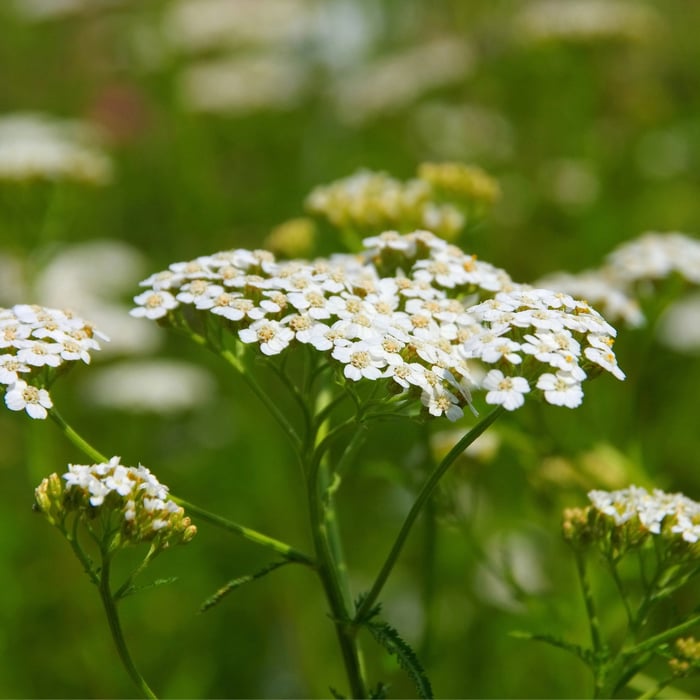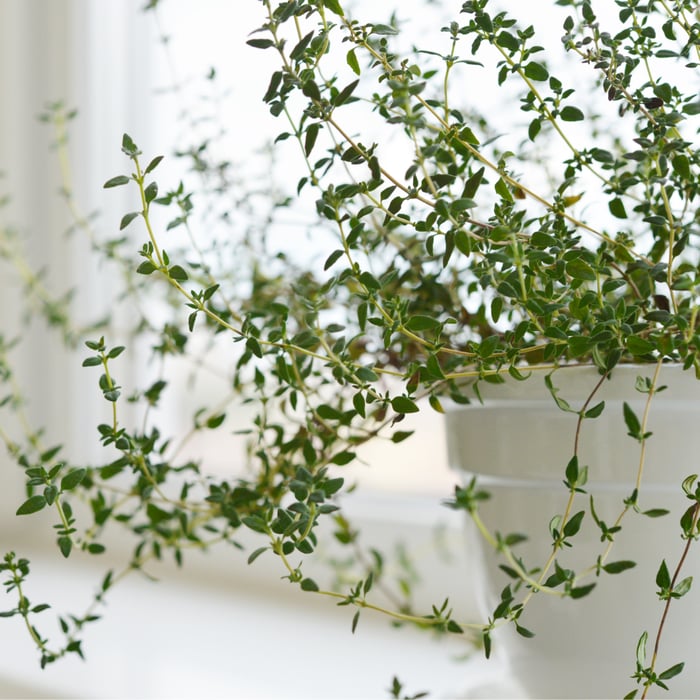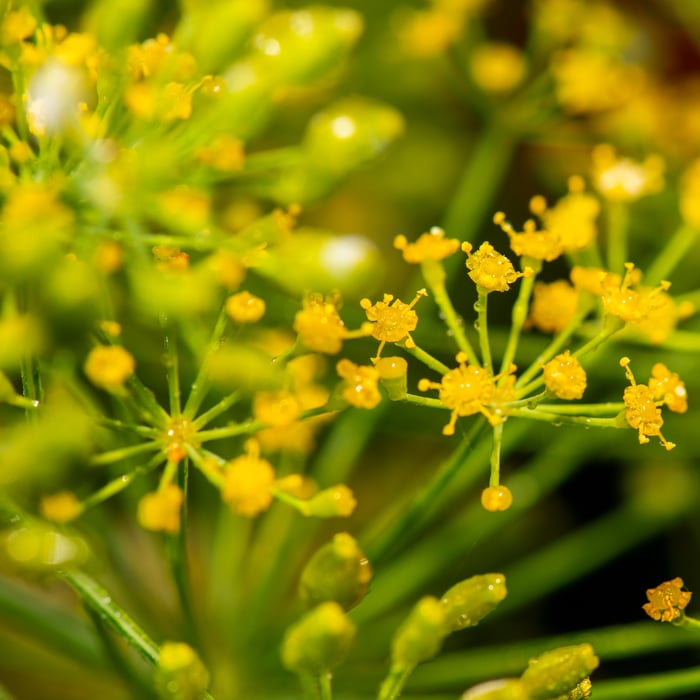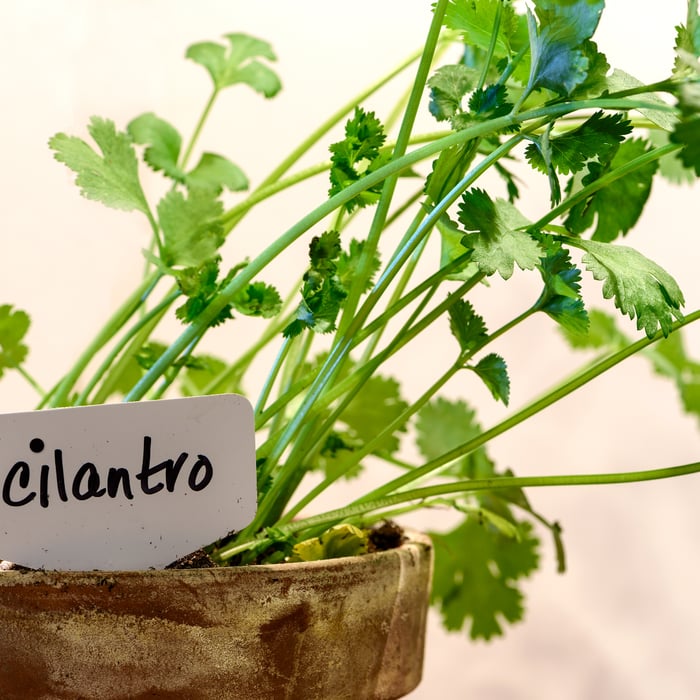Yarrow, also known as Achillea millefolium, is a hardy perennial plant that is easy to grow from seed. Yarrow is a popular choice for herb gardens, and its leaves and flowers have many medicinal properties. In this article, we will guide you through the steps of how to grow yarrow from seed, including tips on how to prevent and treat powdery mildew.
Planting Yarrow Seeds
Yarrow seeds can be planted in early spring when the soil temperature is around 60°F (15°C). Yarrow seeds need light to germinate, so it is essential to sow them on the soil surface. You can sow the seeds directly in the garden beds or in containers.
If you are sowing yarrow seeds in containers, make sure to use a well-drained soil mix. Fill the container with the soil mix and lightly press the seeds onto the surface. Water the soil gently, being careful not to wash away the seeds. Cover the container with plastic wrap to retain moisture and place it in a warm and bright location.
When sowing yarrow seeds in garden beds, prepare the soil by removing weeds and rocks. Yarrow prefers well-drained soil, so you may need to add some sand or gravel to improve drainage. Sow the seeds on the soil surface and lightly press them into the soil. Water the soil gently, being careful not to wash away the seeds.
Yarrow seeds will germinate in 14 to 21 days, depending on the temperature and humidity. Yarrow prefers dry soils, so avoid overwatering. Once the seedlings are about 2 inches tall, thin them to a spacing of 12 to 18 inches apart.
Popular Herb Seeds for Planting | 35 Variety Pack
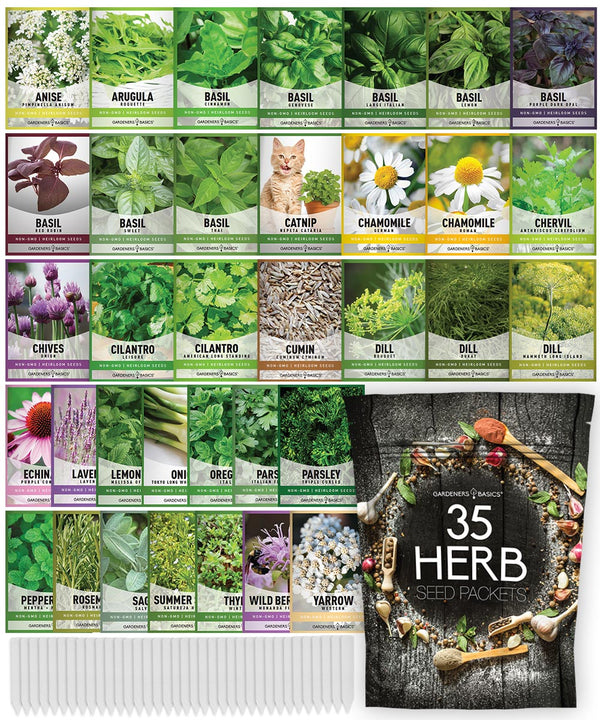
$29.95
$49.95
Heirloom, non-GMO herb seeds for indoor and outdoor home gardens! Introducing our 35 Herb Seeds Variety Pack, the ultimate selection for any herb garden enthusiast! This premium assortment includes heirloom herb seeds that are non-hybrid, open-pollinated, and non-GMO, ensuring you get only… read more
Growing and Caring for Yarrow
Yarrow is a low-maintenance plant that requires minimal care once established. Here are some tips for growing and caring for yarrow:
-
Soil: Yarrow prefers well-drained soil with a pH between 6.0 and 7.0. It can grow in poor soil, but it will produce fewer flowers. Avoid planting yarrow in humid climates, as it is susceptible to powdery mildew.
-
Sun: Yarrow thrives in full sun, although it can tolerate some shade. Make sure to plant it in a location that receives at least 6 hours of direct sunlight per day.
-
Watering: Yarrow is drought-tolerant and prefers dry soils. Water only when the soil is dry to the touch, and avoid overhead watering, as it can promote powdery mildew.
-
Fertilizer: Yarrow does not require fertilizer, but you can apply a balanced fertilizer once a year in early spring to promote growth and flowering.
-
Pruning: Deadhead yarrow regularly to encourage more blooms. Cut back the plant to the basal foliage after the first flush of flowers to promote a second blooming.
-
Propagation: Yarrow can be propagated by division or stem cuttings. Divide the plant every 3 to 4 years in early spring or fall. Take stem cuttings in early summer and root them in well-drained soil.
-
Pest and diseases: Yarrow is generally resistant to pests and diseases, but it can be affected by powdery mildew in humid climates. To prevent powdery mildew, plant the yarrow in a well-ventilated location and avoid overhead watering. If you notice signs of powdery mildew on your yarrow plants, treat them with a fungicide spray.
Transplanting Yarrow
If you are transplanting yarrow seedlings from containers to the garden beds, make sure to do it in the early spring or fall. Yarrow has a deep root system, so it is essential to plant it at the same depth as the root ball. Water the soil after transplanting, and make sure to keep it moist until the plant is established.
Harvesting Yarrow
Yarrow leaves and flowers can be harvested for various medicinal purposes. Yarrow leaves have antiseptic and anti-inflammatory properties and can be used to make tea or a salve. Yarrow flowers are used in making tinctures and can be added to baths for relaxation.
To harvest yarrow leaves and flowers, wait until the plant is in full bloom. Cut the stems just above the basal foliage, leaving about 6 inches of stem. You can use the leaves and flowers fresh or dry them for later use.
Herb Seed Assortment | 15 Variety Pack
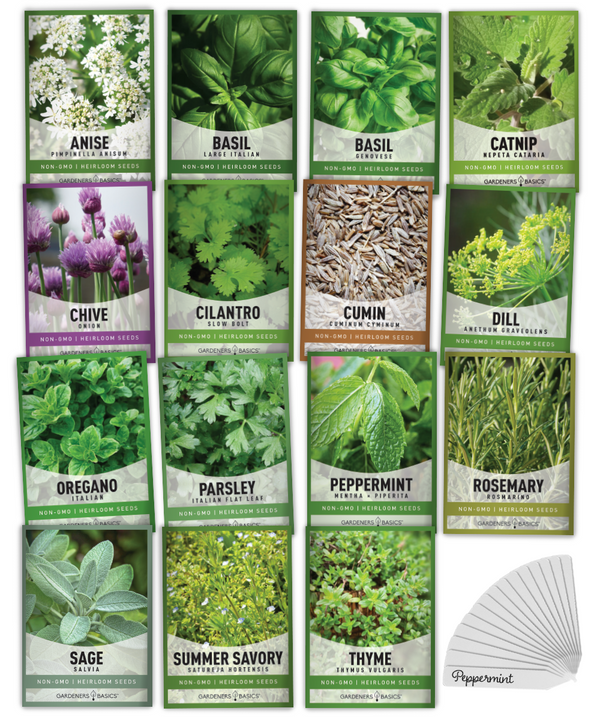
$19.95
Unlock the Power of Homegrown Herbs: 15 Heirloom Herb Seeds for Sustainable Gardening Introducing our 15 Herb Seeds Variety Pack—the ultimate collection for any home gardener, herbalist, or culinary enthusiast looking to grow fresh, flavorful herbs. Each of the 15 herb… read more
Conclusion
Knowing how to grow yarrow from seed is a great way to add a hardy and beautiful perennial plant to your herb garden. With its attractive clusters of flowers and many medicinal properties, yarrow is a must-have for any herb enthusiast. By following the steps outlined in this article, you can easily grow yarrow from seed and enjoy its beauty and health benefits for years to come.
Remember to sow the seeds in early spring on well-drained soil, and make sure to keep the soil moist until the seedlings are established. Yarrow thrives in full sun and dry soils, and it does not require much fertilizer or water once established. Prune yarrow regularly to encourage more blooms, and propagate it by division or stem cuttings.
Although yarrow is generally resistant to pests and diseases, it can be affected by powdery mildew in humid climates. To prevent powdery mildew, make sure to plant the yarrow in a well-ventilated location and avoid overhead watering. If you notice signs of powdery mildew on your yarrow plants, treat them with a fungicide spray.
With a little care and attention, you can enjoy the beauty and many benefits of yarrow in your garden. So why not give it a try and plant some yarrow seeds today? You won't be disappointed!
Frequently Asked Questions (FAQs)
Q: When is the best time to plant yarrow seeds?
A: The best time to plant yarrow seeds is in early spring when the soil temperature is around 60°F (15°C).
Q: Can yarrow grow in humid climates?
A: Yarrow can grow in humid climates, but it is susceptible to powdery mildew. To prevent powdery mildew, plant yarrow in a well-ventilated location and avoid overhead watering.
Q: How much sun does yarrow need?
A: Yarrow thrives in full sun, although it can tolerate some shade. Make sure to plant it in a location that receives at least 6 hours of direct sunlight per day.
Q: Does yarrow need a lot of water?
A: Yarrow is drought-tolerant and prefers dry soils. Water only when the soil is dry to the touch, and avoid overhead watering, as it can promote powdery mildew.
Q: Can yarrow be propagated by seed?
A: Yes, yarrow can be propagated by seed, division, or stem cuttings. Sow the seeds in early spring on well-drained soil, and keep the soil moist until the seedlings are established.
Q: How do I harvest yarrow?
A: Yarrow leaves and flowers can be harvested for various medicinal purposes. Wait until the plant is in full bloom, and cut the stems just above the basal foliage, leaving about 6 inches of stem. Use the leaves and flowers fresh or dry them for later use.
Q: Is yarrow prone to pests and diseases?
A: Yarrow is generally resistant to pests and diseases, but it can be affected by powdery mildew in humid climates. If you notice signs of powdery mildew on your yarrow plants, treat them with a fungicide spray.
Q: How often should I fertilize yarrow?
A: Yarrow does not require fertilizer, but you can apply a balanced fertilizer once a year in early spring to promote growth and flowering.
Q: Can yarrow grow in poor soil?
A: Yarrow can grow in poor soil, but it will produce fewer flowers. It prefers a well-drained soil with a pH between 6.0 and 7.0.
Q: How do I transplant yarrow seedlings?
A: If you are transplanting yarrow seedlings from containers to the garden beds, make sure to do it in the early spring or fall. Plant it at the same depth as the root ball and water the soil after transplanting. Keep the soil moist until the plant is established.



